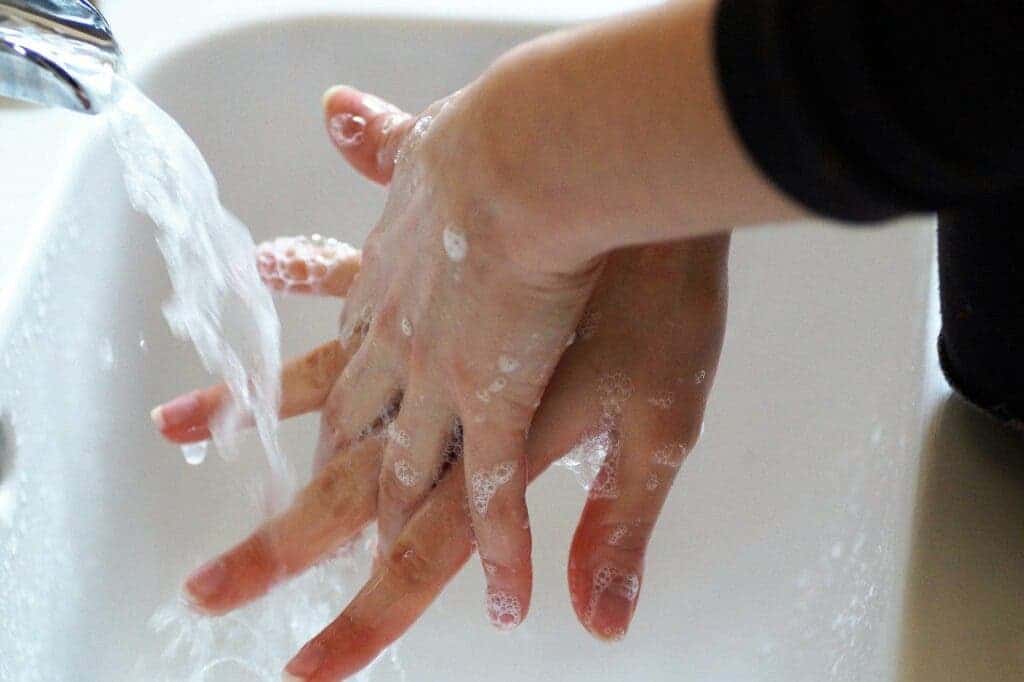In the past several months, the CDC has touted 20 seconds as the standard for all hand-washing activities, bringing a number of rarely sung happy birthdays, fight songs, and other multiple-second ditties out of the closet as a counter for the time period.
However, studies were short on why exactly 20 is the magic number. Well, now there is one.
Harder, better, faster, washer
In a new report out of the American Institute of Physics published in Physics of Fluids, researchers have created a model which captures the key mechanics of hand-washing. Turns out faster hand movement is better.
By simulating the motion you make when cleaning your hands, researchers estimated the time scales on which particles like viruses and bacteria were removed from your hands. Their model acted in two dimensions, with a wavy surface moving past another with a thin film of liquid separating the two — it’s imperfect but still good enough to get an idea. These wavy surfaces represented hands in their model due to the surface harshness on small spatial scales.
Particles would be trapped on the rough surfaces in wells of the hands, like the bottom of a valley. Vigorous movement and high water pressure would bring the particles to the surface and out of their little valley homes and out of your skin. According to Paul Hammond, author of the report, it turns out that 20 seconds is what he came up with in his model as the time to dislodge these particles from your hands.
“Basically, the flow tells you about the forces on the particles. Then you can work out how the particles move and figure out if they get removed,” said Hammond, who likened the process to scrubbing a stain on a shirt where the faster the motion the more likely it is to remove it. “If you move your hands too gently, too slowly, relative to one another, the forces created by the flowing fluid are not big enough to overcome the force holding the particle down.”
Hammond states that the model does not take into account chemical or biological processes that occur when using soap, but it’s pretty well known across the board that soap only improves the probability that your hands will, in fact, become cleaner.
“These viruses have membranes that surround the genetic particles that are called lipid membranes because they have an oily, greasy structure,” Thomas Gilbert, an associate professor of chemistry and chemical biology at Northeastern University, told the BBC. “It’s this kind of structure than be neutralized by soap and water.”
He explained that the dissolving of the outer “envelope” breaks up virus cells, and the genetic material, which is the RNA that takes over human cells in order to make copies of the virus, is swept away and destroyed because of the chemical or biological agents.
Just knowing how the physics of handwashing works can give us some clues as to how we can create more effective and environmentally friendly soaps, the researcher concludes.
“Nowadays, we need to be a bit more thoughtful about what happens to the wash chemicals when they go down the plughole and enter the environment.”
In the end, there is much more that goes into the story of handwashing, but this study does explain some puzzles and lay the foundation for future research. Truth be told, we’ve learned in the pandemic that we could all use a bit of work on our handwashing.



